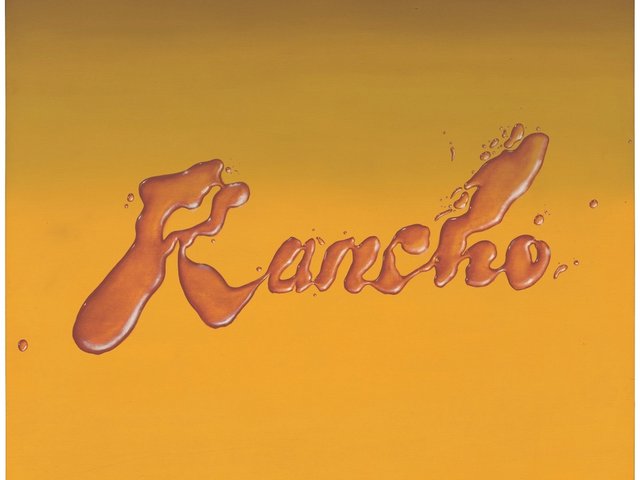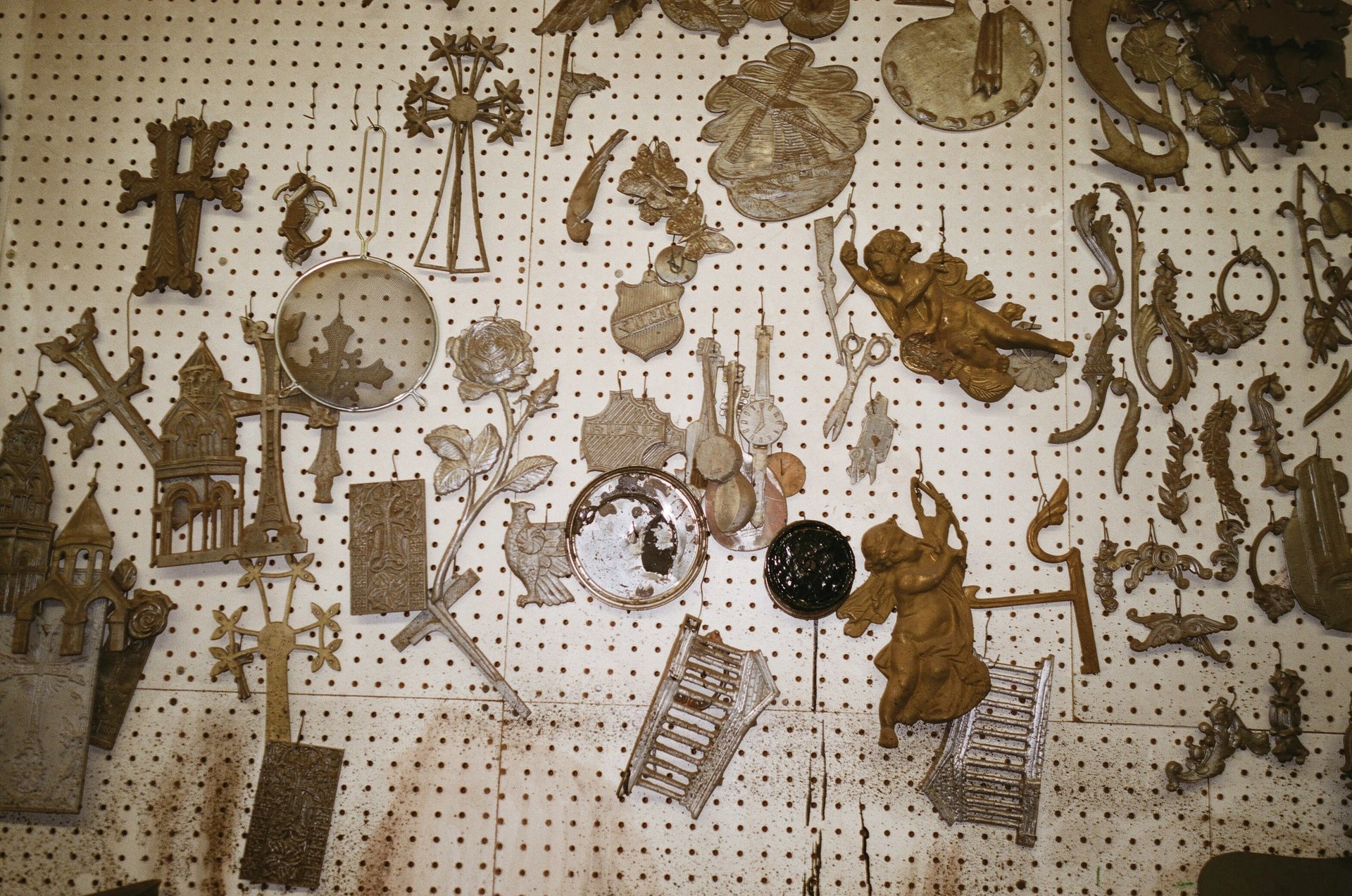
Fiona Connor at SculptureCenter © Fiona Connor
Fiona Connor: Closed for Installation
SculptureCenter, until 29 July
No, the SculptureCenter is not actually “closed for installation”. That is just the title of a solo show by the multimedia artist Fiona Connor, who aims to “monumentalise the install period” through more than 20 bronze sculptures of everyday objects such as a drill, a tape measure, cardboard, a water bottle and a paint tray covered in plastic.
“When people are working to set up a show, the gallery is full of life and has a particular atmosphere, and then all traces of that are erased when the show begins,” Connor says. “There’s a moment during each install where the gallery looks so great and there’s these unscripted little happenings and a sense of joy.”
The Auckland-born, Los Angeles-based artist, who received her MFA from the California Institute of the Arts, focuses on the intersection of architecture, sculpture and installation, often replicating commonplace or obsolete objects. She is also collecting waste paper from museums so that it can be shredded and pulped to be transformed into objects resembling exhibition catalogues, which will be created during a workshop at the museum.
Meanwhile, in a nearby apartment at 44-46 Vernon Boulevard in Long Island City, the artist has co-ordinated a conceptual intervention called #4 where a tenant, who agreed to participate in the project, will have their windows cleaned. “It’s a metaphorical idea about changing their outlook and transitional moments,” Connor says, adding that she hopes future tenants will also agree to participate in the work.

Die Eselpfleger, 2013 © Neo Rauch, VG Bild-Kunst, Bonn / ARS
Neo Rauch: Aus dem Boden/From the Floor
The Drawing Center, until 28 July
The Leipzig School artist Neo Rauch does not make preparatory sketches before he begins his fantastical paintings. Instead, he creates what he calls “dreams on paper” to explore his subconscious while he paints, which are often discarded for a studio assistant to collect and file away. The Drawing Center has co-organised a show of more than 150 examples of this artistic flotsam as well as more formal completed works, giving the audience a full sense of Rauch’s process.
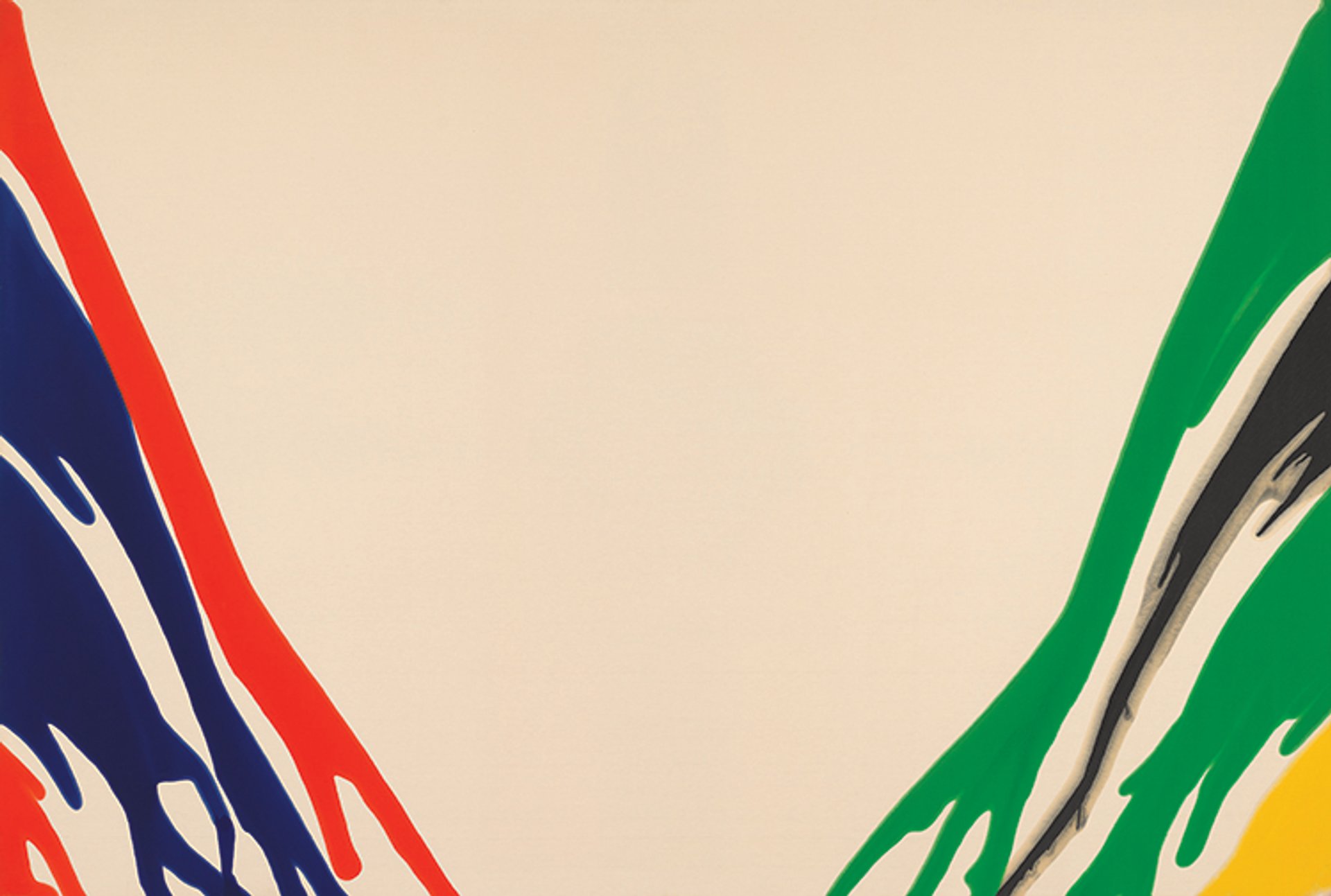
Gamma Delta (1959-60), by Morris Louis Image courtesy of Whitney Museum of American Art
Spilling Over: Painting Colour in the 1960s
Whitney Museum of American Art, until August 2019
This exhibition, drawn from the Whitney’s collection, examines how acrylic paint opened up new possibilities and a wider range of colours for artists in the 1960s and early 70s, including the Colour Field painters who poured pigments onto unprimed canvas to the Op artists who used contrasting colours to trigger both a physical and unconscious response. Among the highlights are recently acquired paintings by Emma Amos and Kay Walking, along with works by Morris Louis (pictured), Ellsworth Kelly, Frank Stella, Helen Frankenthaler and others.
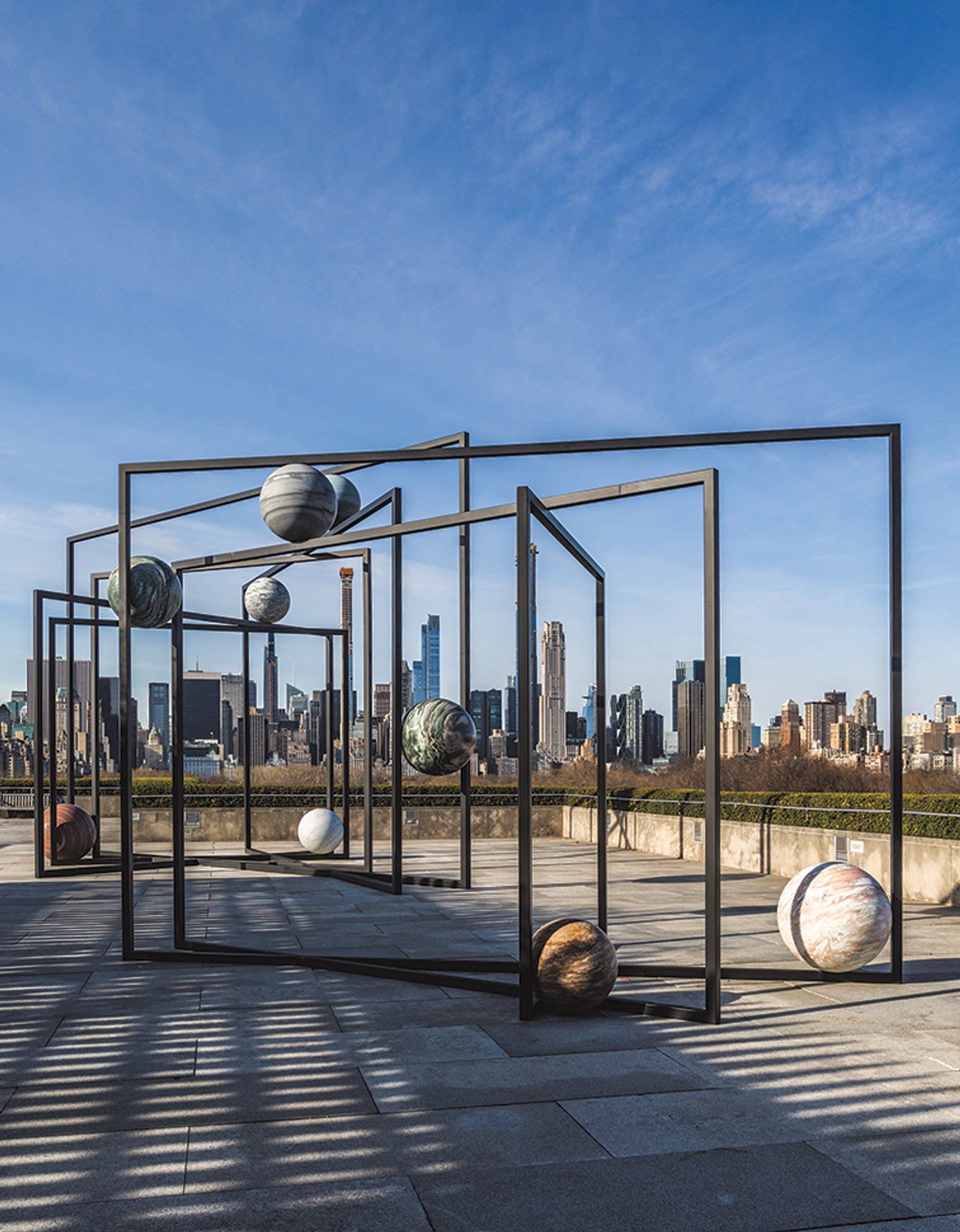
Alicja Kwade's ParaPivot on the rooftop of the Met, NY Courtesy of the Metropolitan Museum of Art
Alicja Kwade: ParaPivot
Metropolitan Museum of Art, until 27 October
If you liked the first-ever photograph of a black hole, recently captured by scientists, make sure you visit the Met’s rooftop garden this summer, where the Berlin-based Alicja Kwade’s large-scale sculptural project ParaPivot aims to evoke the “ballet of rotations and evolutions of the solar system”, says the curator Kelly Baum.
The Polish-German artist has become well-known for her sculptural works which have scientific and psychological themes, and recently showed the installation TunnelTeller (2018) on the Crane Estate in Ipswich, Massachusetts—a maze-like work that she has said “invites observers to shift their points of view”.

Augusta Savage (centre) with Ernestine Rose, Roberta Bosley Hubert and her sculpture of James Weldon Johnson, 1939 Image courtesy Schomburg Center for Research in Black Culture
Augusta Savage: Renaissance Woman
New-York Historical Society, 3 May-28 July
Augusta Savage countered 20th-century stereotypes of African Americans through her sculptures of black figures in a classically inspired style. But much of her work has been lost, since she did not have the means to cast it in bronze. The New-York Historical Society redresses this with its show of 50 of Savage’s remaining works. “Her legacy of strong, sympathetic portrayals of black figures is evident in the subsequent artists who studied with her,” says Margaret Hofer, the Society’s museum director.
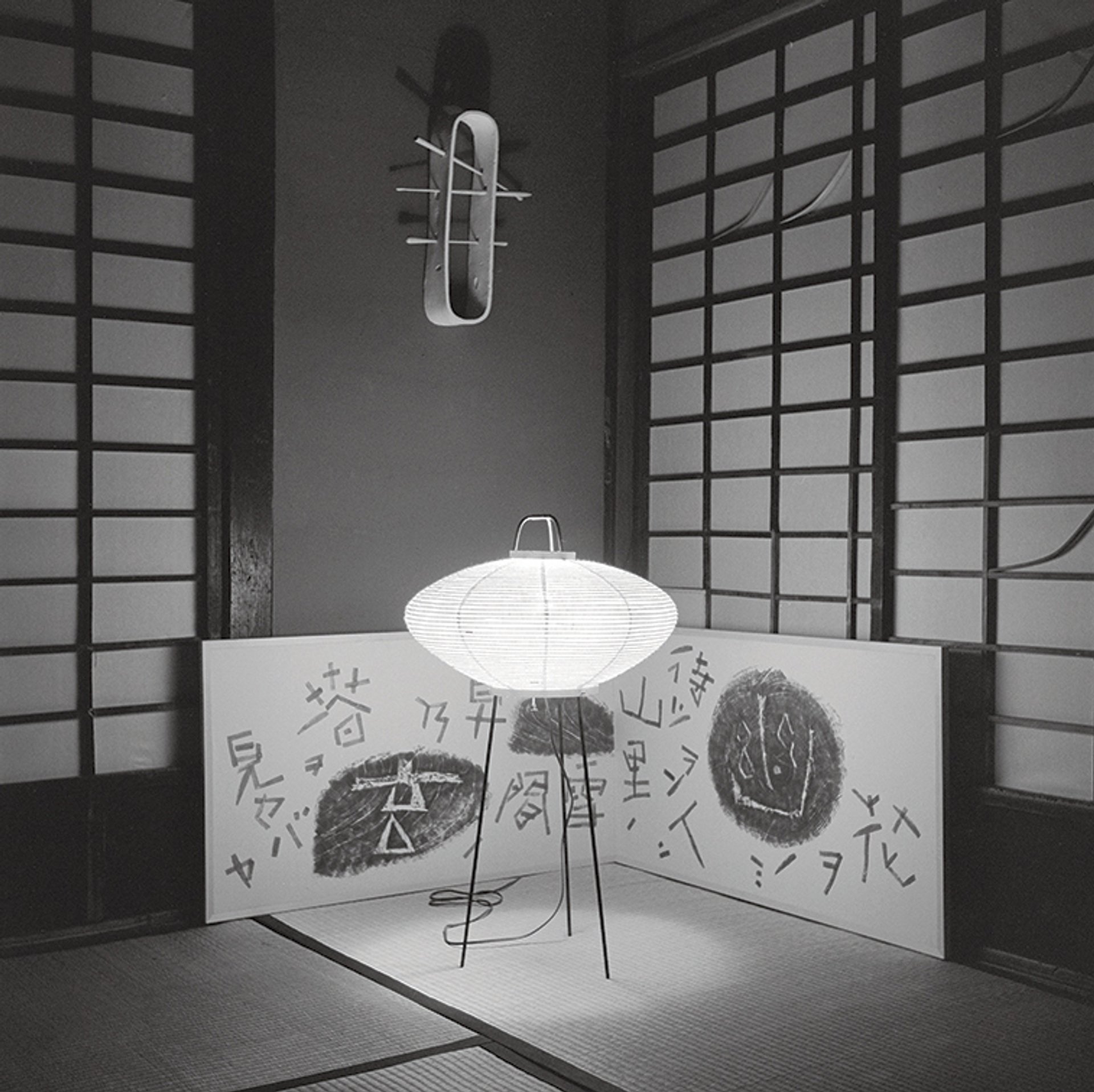
Isamu Noguchi’s studio in the 1950s © Isamu Noguchi Foundation and Garden Museum, New York/ARS
Changing and Unchanging Things: Noguchi and Hasegawa in Post-war Japan
Noguchi Museum, 1 May-14 July
This show of around 90 works by Isamu Noguchi and Saburo Hasegawa, explores how the two artists influenced each other. Their relationship helped Noguchi, who was born in Los Angeles but spent much of his childhood in Japan, explore his dual heritage and create a visual vocabulary for his sculptures, gardens, furniture and lighting designs. Hasegawa, who introduced abstraction to Japan in the 1930s, was in turn inspired to liberate himself from Western-style painting and delve into drawing, block printing, photograms and calligraphy.
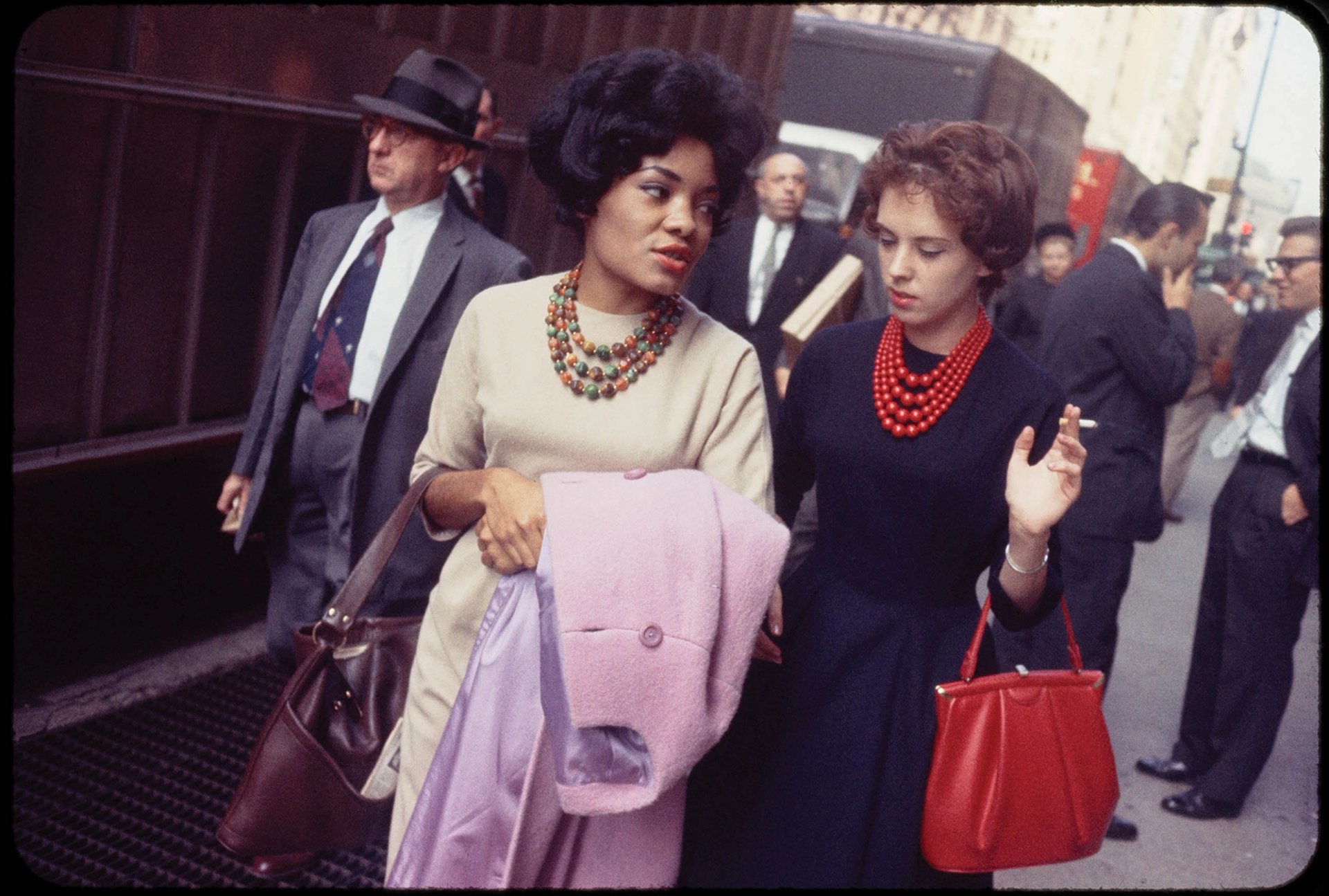
Life on the streets of New York City, around 1965 Photo © Garry Winogrand / Estate of Garry Winogrand, courtesy of Fraenkel Gallery, San Francisco
Garry Winogrand: Colour
Brooklyn Museum, 3 May-8 December
In 1967, the photographer and snapshot pioneer Garry Winogrand showed 80 colour slides in New Documents, the groundbreaking photography exhibition at the Museum of Modern Art in his native New York. But Winogrand’s display was cut short when the projector caught fire. This ill-fated MoMA show has inspired Garry Winogrand: Colour, a new exhibition at the Brooklyn Museum. “Most people assume he only dabbled in [colour photography],” says Drew Sawyer, the show’s main curator. But Winogrand made more than 45,000 colour slides, which he very rarely printed, in the 1950s and 60s.
The exhibition has around 400 of these images in 16 projections, “the way Winogrand showed the work during his lifetime”, Sawyer says. The show is arranged so that visitors can view more than one of the four-to-five-minute slideshows at once. “I wanted the sense of a dynamic flow of images, a sense of how he worked on the street,” Sawyer says. This includes an entire projection carousel of images taken in Coney Island, the subject of some of the first still photographs Winogrand ever showed publicly, then in black and white. (Winogrand often carried two cameras to shoot in both black and white and in colour.)
Winogrand’s use of colour, then primarily linked to commercial or amateur family photographers, “really pushed what was considered fine art”, Sawyer says. Unlike how commercial photographers “sensationalised” colour, “for Winogrand, it was just another element of the picture—which was pretty radical for the 1960s”.
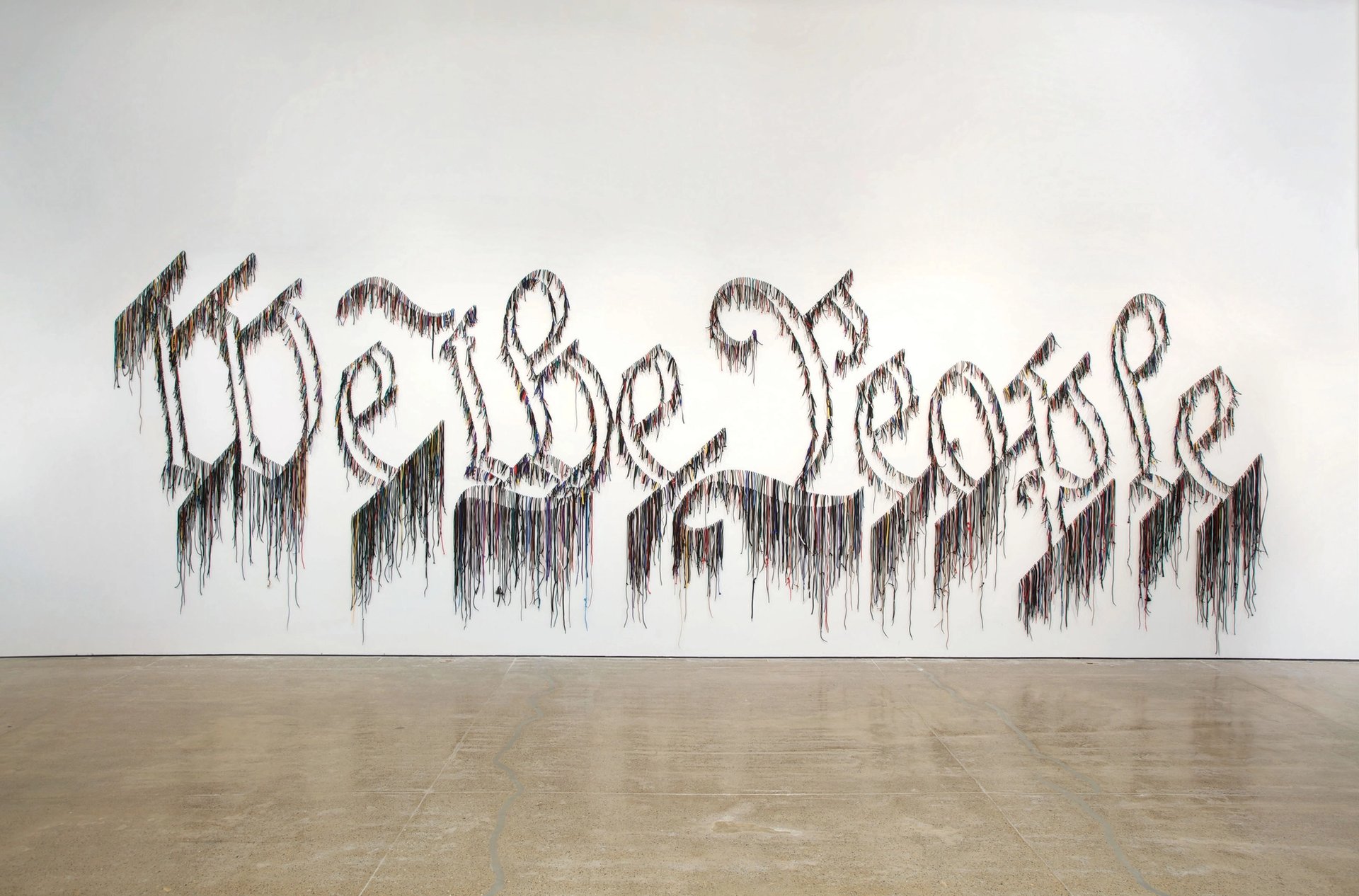
Nari Ward's We the People © The Speed Art Museum, Louisville, KY
Nari Ward: We the People
New Museum, until 26 May
The Jamaica-born artist Nari Ward returns to the New Museum—which gave him his first institutional solo show in 1993—for his first New York retrospective, tracing his 25-year career through more than 30 works. These sculptures, installations, paintings and video often use discarded everyday objects such as prams and plastic bags to explore historical memory, the African diaspora, democracy, gentrification and other social themes. The show’s title comes from one of his most well-known works, a 2011 wall piece that spells the opening of the Preamble to the US Constitution in colourful shoelaces.
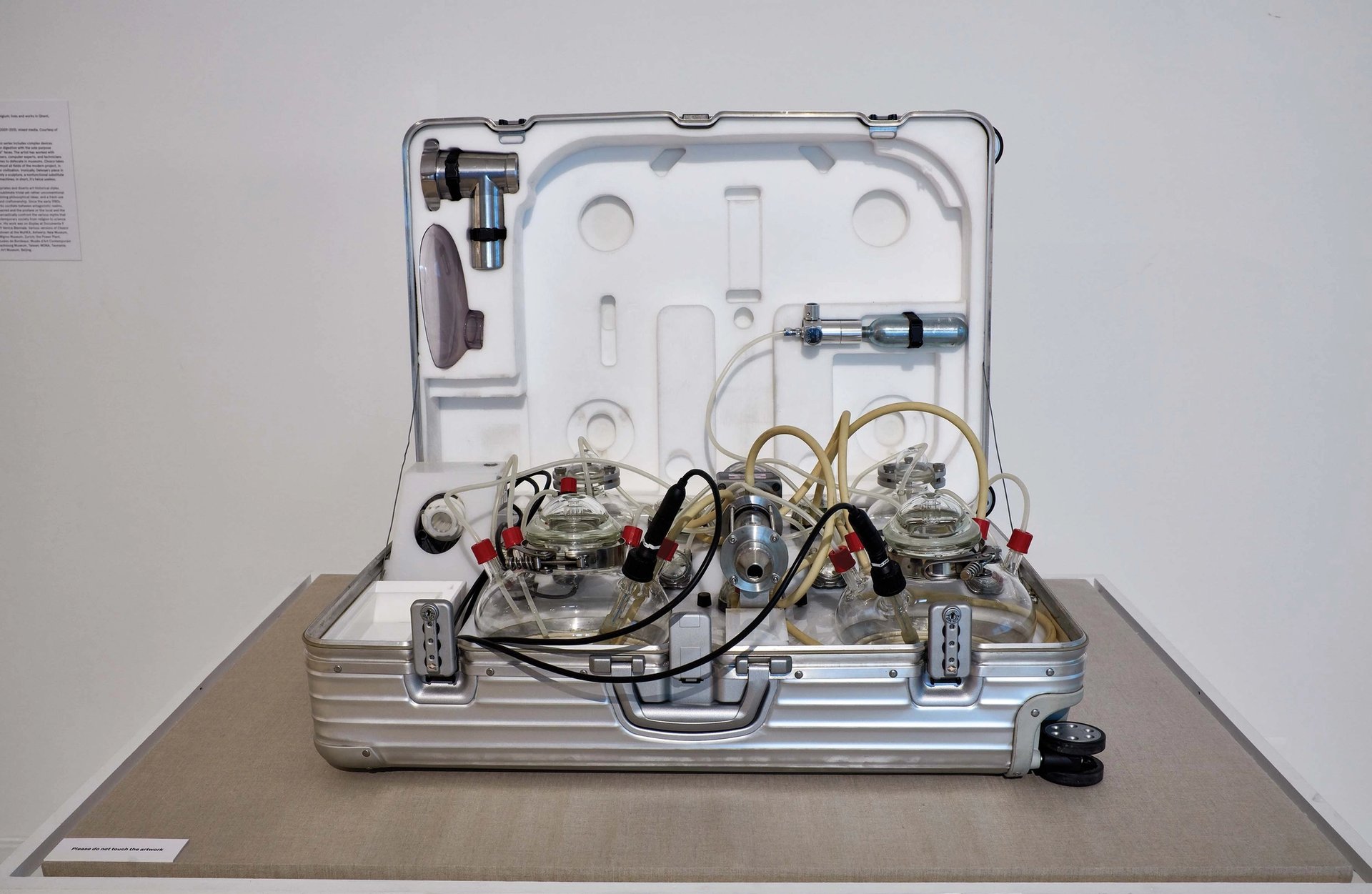
From the exhibition, Useless: Machines for Dreaming, Thinking, and Seeing Photo © Argenis Apolinario Photography
Useless: Machines for Dreaming, Thinking, and Seeing
Bronx Museum of the Arts, until 1 September
In our late capitalist society, we have become accustomed to assessing the value of something by its usefulness while the automation of our world renders us increasingly useless. A show at the Bronx Museum of the Arts challenges this appraisal through works by around 20 artists—including the artist duo Peter Fischli and David Weiss, Adriana Salazar, William Kentridge and Roxy Paine—who transform or use machines in odd ways, creating a tension between our expectation of an object’s usefulness and art’s fundamental “inutility”.
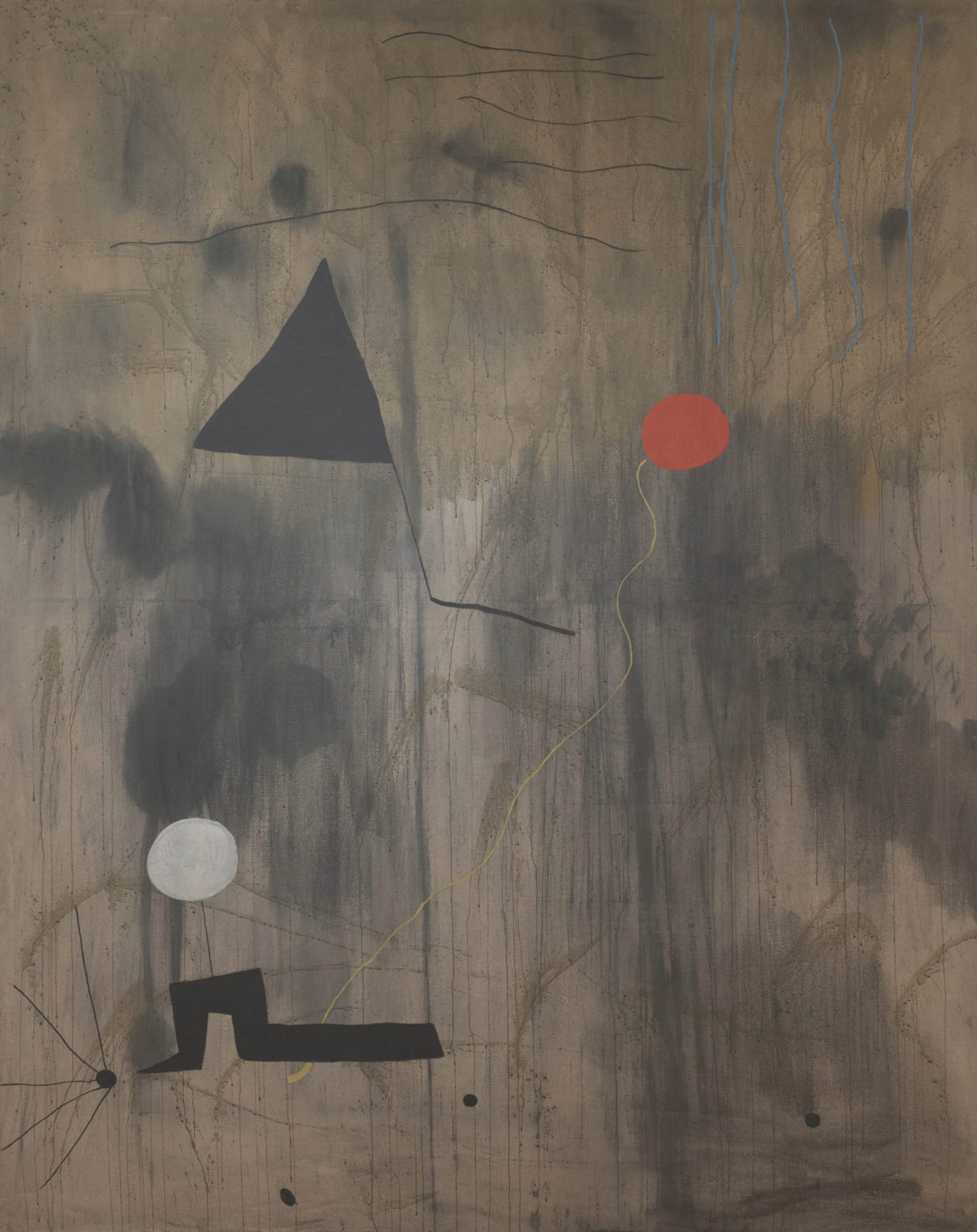
The Birth of the World (1925) Photo © 2018 Successió Miró/ARS/ADAGP
Joan Miró: Birth of the World
Museum of Modern Art, until 15 June
In 1925, flush with the success of a solo show in Paris, Joan Miró returned to his home in the village of Montroig and pondered what to do next to meet the expectations of his Surrealist brethren. The answer was The Birth of the World, now the centrepiece of an exhibition at the Museum of Modern Art.
With around 60 works from the 1920s to the 1950s, MoMA explores the creation of Miró’s pictorial universe, presenting The Birth of the World as a turning point. Giving rein to his unconscious, Miró drips and splashes paint onto the canvas, then fashions pictographs atop the ground. This would persist in his work for decades, as seen in other works in the show.

Lubaina Himid’s Five Conversations (2019), on show at the High Line, NY Photo © Timothy Schenck, courtesy of Friends of High Line
En Plein Air
Various locations on the High Line, until March 2020
Inspired by the tradition of painting outdoors, the High Line’s group show En Plein Air aims to expand on the idea of bringing the artist’s studio outside. Among the highlights, the French artist Daniel Buren’s striped flags that zig-zag across the Western Rail Yards, and site-specific works by Firelei Báez, Ei Arakawa, Lara Schnitger and Lubaina Himid, among others, that explore symbols of the bohemian en plein air practice.
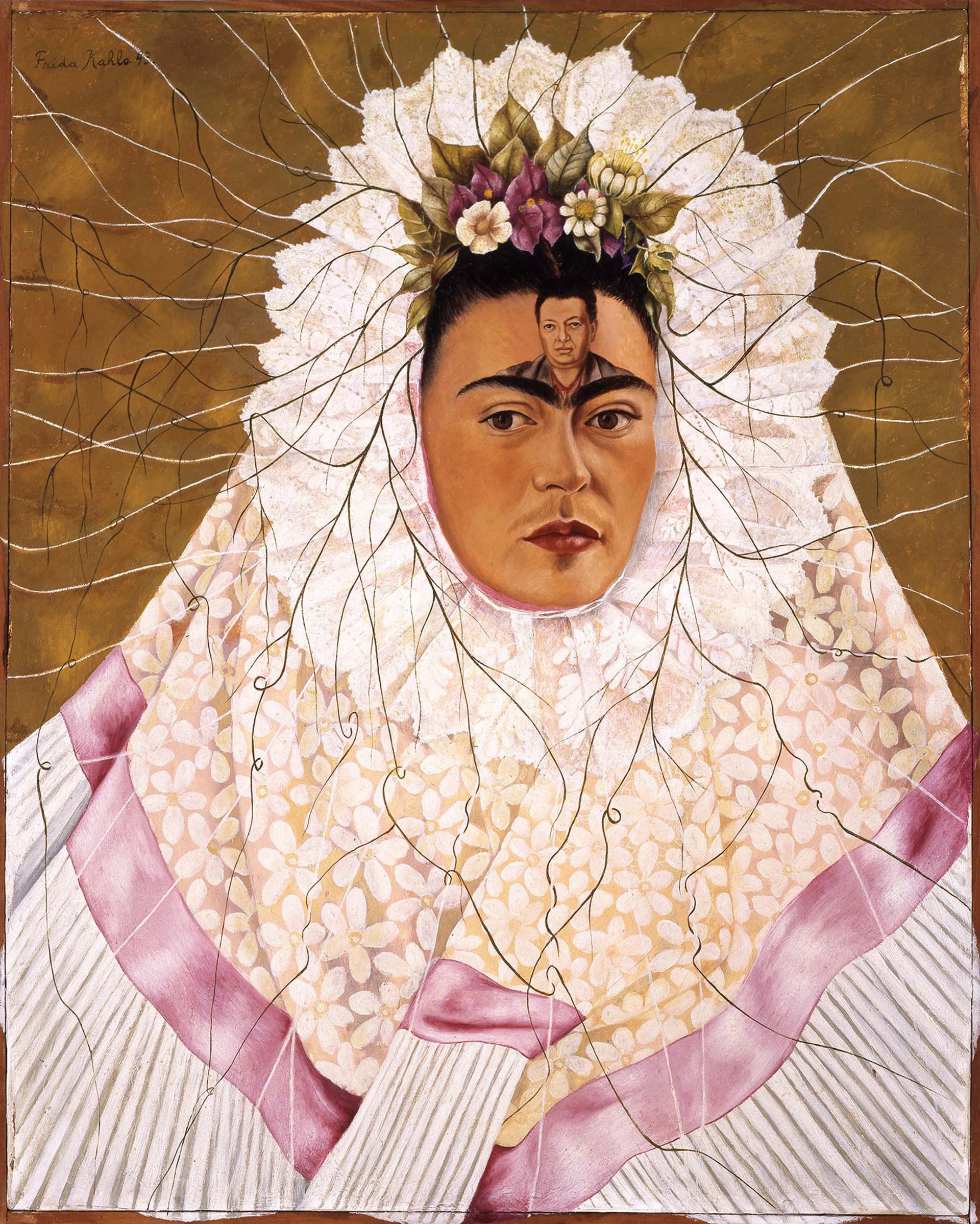
Frida Kahlo self-portrait as a Tehuana (1943) Kahlo © Banco de México Diego Rivera Frida Kahlo Museums Trust/ARS
Frida Kahlo: Appearances Can Be Deceiving
Brooklyn Museum, until 12 May
This intimate look at Frida Kahlo’s life and work includes more than 100 of her personal objects, such as pre-colonial jewellery and traditional Tehuana clothing, most of which were locked away in her bathroom for 50 years after her death in 1954. Kahlo used such pieces to reflect her political beliefs and culture, and to deal with physical disabilities from a traffic accident in 1925.
Among the most poignant objects is a hand-painted plaster corset she made in 1944, depicting her spine as a broken column surrounded by flowers and fruit. Various self-portraits, photographs of Kahlo by Edward Weston and Manuel Álvarez Bravo, and Mesoamerican objects from the museum’s collection, round out the story.


